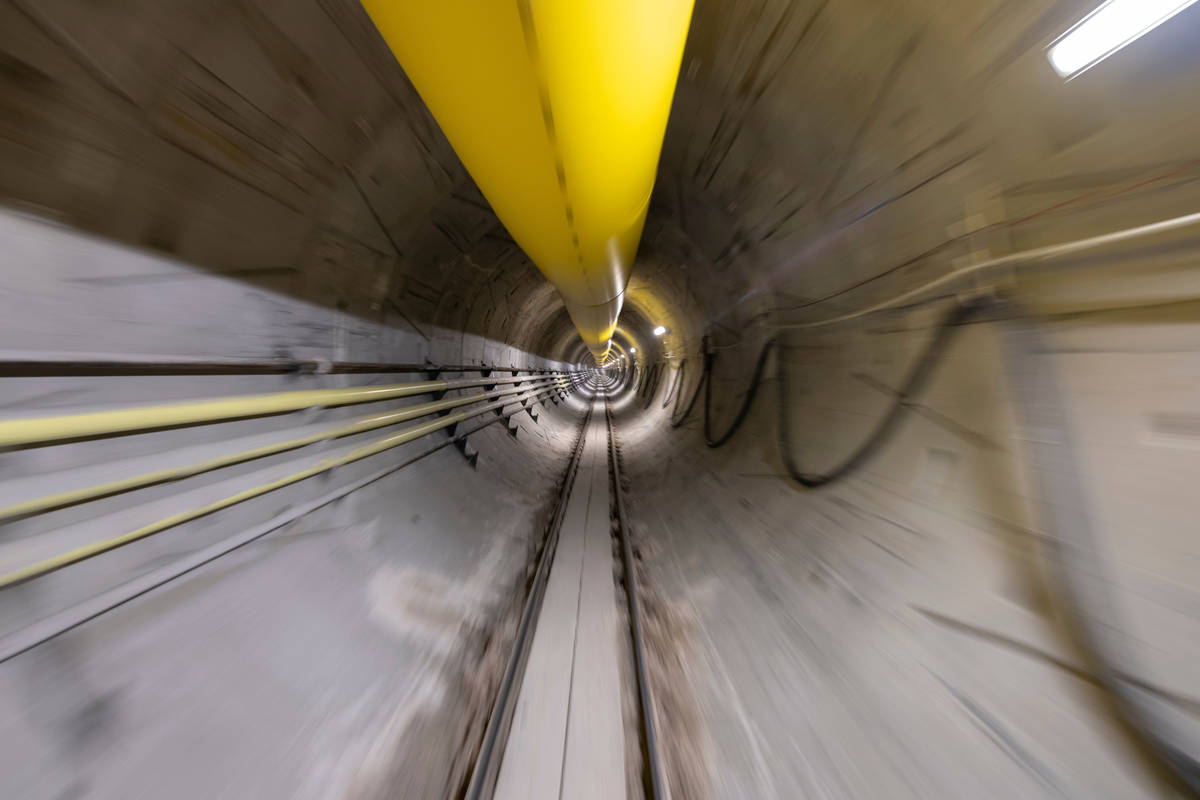CES debut of Elon Musk’s transit system ruined by COVID-19

It was all so perfectly planned.
The opening of the Las Vegas Convention and Visitors Authority’s new $980.3 million West Hall expansion was all set to coincide with CES 2021, the massive technology show that annually draws more than 170,000 people to Las Vegas every January.
And underneath the Las Vegas Convention Center, out of sight but waiting to welcome CES attendees, would be the $52.5 million Boring Co. people mover, a transit system conceived by entrepreneur Elon Musk that has never been deployed commercially.
LVCVA President and CEO Steve Hill has often remarked how that underground system could become a Las Vegas attraction itself. Because the vehicles used in the system will be vehicles on Tesla chassis to be driven in autonomous mode, the Boring Co.’s people mover had a distinctive CES feel to it and could have been one of the highlights of the 2021 show.
But unfortunately, along came COVID-19, ruining most of 2020, including plans for CES 2021, which won’t take place in Las Vegas and will be entirely online in a virtual format.
The coordination of having the 1.4-million-square-foot facility and its 600,000 square feet of exhibit space and 150,000 square feet of meeting rooms in time for CES was almost flawless. A temporary certificate of occupancy was delivered to the LVCVA in mid-December, giving workers the opportunity to test systems while CES exhibitors began moving their showcases into the hall.
Among the hot topics of CES 2021 will be autonomous vehicles, so the Boring-Tesla people-mover would have been right in the show’s wheelhouse. I was half expecting Musk to be invited as a CES keynote speaker.
But all that construction planning and coordination was for naught when the Consumer Technology Association made the call July 28 to turn CES 2021 into a virtual event.
As it turns out, the people-mover vehicles weren’t going to be operated in autonomous mode anyway for CES, Hill told me last week. He said in the early going, a driver would be aboard as the vehicles to transport passengers to and from the three stations of the Convention Center system.
Despite that, the Boring system was destined to be one of the most-talked-about aspects of the show. The tech crowd can be pretty critical, and I’m sure the thousands in attendance would be tweeting their views of how well it performed.
I was looking forward to seeing how the system would hold up with the massive volume of people in attendance and how long the waiting lines were going to be for conventioneers moving from station to station. What would take longer: waiting for a ride on the people mover or walking from the Central Hall to the new West Hall?
We won’t know until later in 2021, when we’ll finally see some conventions staged in Las Vegas.
Meanwhile, The Boring Co. is moving on to its next big Las Vegas project, the Vegas Loop. It’s 15 miles of connected tunnels beneath the resort corridor for an underground transit system that has been enabled by the elimination of a Las Vegas Monorail noncompete zone by the Monorail’s new owner, the LVCVA.
To be clear, the Vegas Loop project, being paid for and operated by The Boring Co., is a completely separate project from the people mover at the Convention Center. The Boring Co. has yet to say how much it plans to invest in its project or how much the public will be asked to pay to ride in it.
Last week, Review-Journal colleague Mick Akers reported some previously undisclosed details of the system from plans that have been submitted to Clark County. One of those details is that there will be a set of tunnels connecting all of the Caesars Entertainment Inc. properties on the Strip.
A Caesars spokesperson emailed me last week that the company would have no comment on The Boring Co. Vegas Loop project or Caesars’ role. And Boring continues to be one of the least transparent companies I’ve ever encountered.
What is Caesars up to connecting its properties? It’s hard to say, considering Caesars properties are pretty much clustered together on the center Strip and the longest journey between them presumably would be from Planet Hollywood to the Linq Promenade.
Additional details probably will come to light next year when county commissioners review Boring’s plans.
In the meantime, the public will remain in the dark — just like someone in a tunnel when the power goes out — about what could be an innovative transportation system for the city.
Contact Richard N. Velotta at rvelotta@reviewjournal.com or 702-477-3893. Follow @RickVelotta on Twitter.